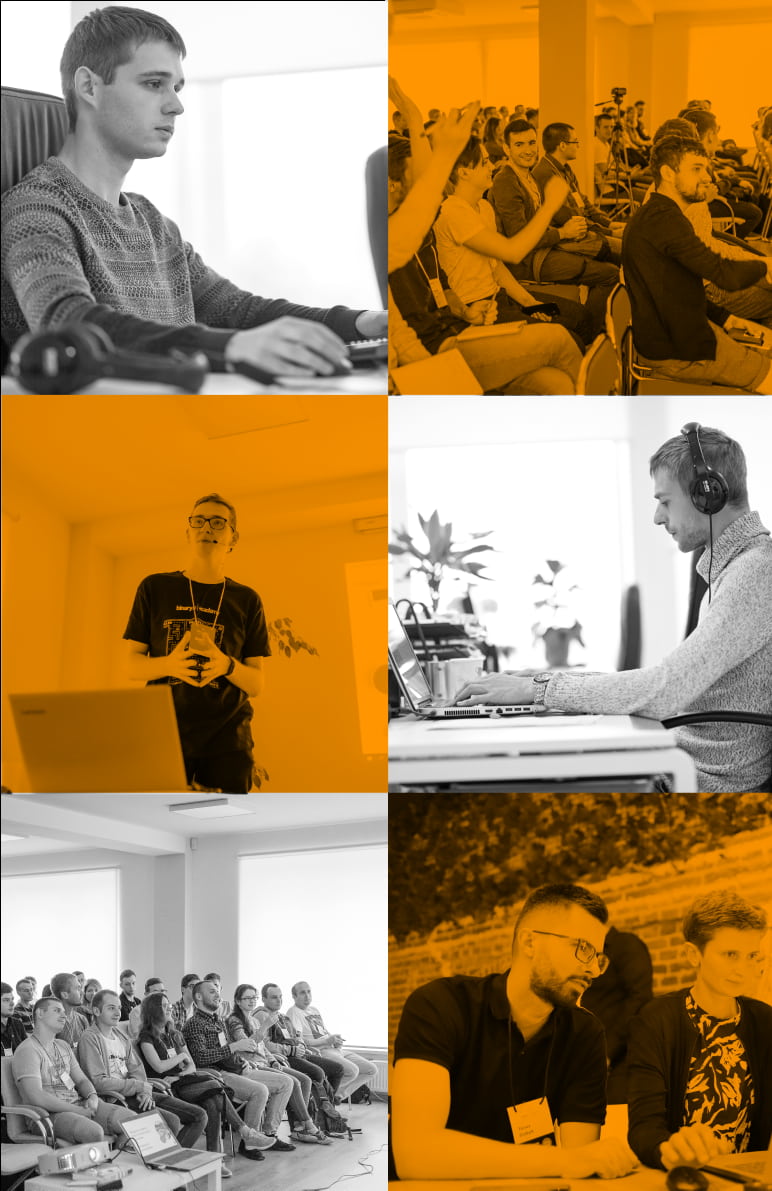Benefits of choosing Flutter for your project
Fewer development hours = lower costs
With Flutter, you get the native-like look and feel without having to develop individual solutions for different platforms. Plus, Flutter’s capabilities, such as a hot reload feature, allow for fast change implementation and experimenting, which leads to reduced expenses on development and testing.
Faster time to market
Flutter speeds up every step of the development process. It has pre-built widgets that help quickly create interactive interfaces and enables Flutter developers to manage code changes in real time. With experienced Flutter developers, you can launch your product in no time.
Support and clear documentation
Flutter is an open-source development kit that is convenient for developers. With a growing community of Flutter enthusiasts and extensive documentation by Google, this technology is easy and convenient to work with.
Award-winning services
At Binary Studio, we have a team of experienced Flutter developers and foster a culture of learning and innovation: you can rest assured your product will be in safe hands. Engineering award-winning products for SMBs since 2005, we value transparent cooperation and take extreme ownership over each project we carry out. Top Flutter Developer Interview Questions
How does one ensure responsive design for different device sizes in Flutter?
Developers can use techniques like fluid layouts, flexible widgets, and media queries to create UIs that adapt to various screen sizes. They should adjust orientation, text sizing, and layout based on the viewport to optimize readability and usability across devices. Testing on different devices early on helps catch issues with responsiveness.
What best practices help promote readable Flutter code?
Developers should use descriptive test names, comments explaining complex logic, the Arrange-Act-Assert pattern for test structure to improve readability. Keeping tests focused, concise and consistent indentation/formatting also makes code more readable. Avoiding deep nesting and code duplication improves readability as well.
How does one structure widget trees to build complex layouts in Flutter?
Breaking the UI into smaller reusable widgets and nesting components helps construct intricate designs. Creating custom widgets to handle repetitive UI elements reduces duplication in widget trees. Testing widget trees on various device sizes ensures proper display across platforms and screen sizes. Structured, optimized trees allow crafting complex Flutter layouts.
Tech Expertise of Our Flutter Developers
Binary Studio helps you hire freelance Flutter developers who are experts at creating cross-platform mobile, desktop and web applications using the Flutter framework and Dart programming language. Our developers have in-depth knowledge of Flutter and Dart and are skilled at building robust applications that work seamlessly on Android, iOS, and desktop platforms.
They are also proficient in integrating state management solutions like BLoC, Redux, and Provider for efficient data flow. Additionally, they are familiar with making API calls using HTTP packages to retrieve and synchronize real-time data smoothly.
Our Flutter experts leverage platform-specific APIs and features to fine-tune the behavior of your application for each platform while maintaining consistency across them. Whether it’s integrating platform-specific plugins, ensuring compatibility across screens, or managing push notifications - we do everything required to deliver a seamless user experience.
Pros
- Cross-platform Flutter apps can be compiled to run on both iOS and Android from a single codebase. This saves significant development time and resources.
- Open source Flutter is open source, so developers can contribute to fixing framework issues and extending functionality. There is an active community behind Flutter.
- Fast performance Flutter apps are compiled to native code so they can achieve performance comparable to native iOS/Android apps. The Flutter engine also uses graphics rendering designed for high performance.
- Expressive and flexible UI Flutter’s layered architecture and widget set allows for creating customizable and expressive user interface designs. The reactive framework makes it easy to build UIs that update dynamically.
- Developer productivity Features like hot reload that allow you to quickly view code changes, reuse code across platforms, and access widgets and tools make Flutter highly productive.
Cons
- Still evolving While Flutter is quite stable and production-ready, it is still a relatively young framework that is less battle-tested than mature native platforms.
- Limited third-party support The number of third-party libraries and tools for Flutter is growing rapidly but still smaller compared to what is available for native iOS/Android development.
- Steep learning curve While Flutter is designed to be easy to pick up, becoming highly productive with it still requires learning its approach of creating UIs with composition of widgets.
- App size The baseline Flutter app size can be large compared to a minimal native app. However, there are ways to reduce Flutter app sizes.
Partnership Model
The Time and Material (T&M) pricing model is an effective approach for small and medium-sized businesses, especially those with complex, long-term projects. It also works well for ongoing testing, bug fixing, maintenance and support efforts. With T&M, scope and budgets are defined iteratively versus upfront payment for the entire project. This provides flexibility to adjust effort and plans as needs change over time.
By scoping and estimating iteratively, T&M pricing can adapt to changing needs. For SMBs, this incremental style matches the way many technology projects unfold. T&M provides an adjustable framework to evolve systems over time.
Key benefits of the T&M approach:
Accommodates fluid requirements that emerge during project execution Allows for changes in timeline or resources required Gives client control to pivot priorities as market conditions shift Suits prolonged engagements across multiple phases
How To Hire Flutter Developers?
When hiring Flutter developers, there are a few key technical skills to look for. Programming languages
- Proficiency in Dart is essential, as it is used to code both the UI and logic in Flutter apps
- JavaScript skills are useful for web projects or integrating web features
- Knowledge of Kotlin/Swift helps integrate native Android/iOS features
Widget expertise
- Understanding widgets as the building blocks of Flutter apps
- Ability to build custom widgets and compose widget libraries
- Creating reusable components for maintainability and performance optimization
State management
- Expertise in state management has a big impact on app performance and UX
- Updating only necessary UI components upon state changes enables smooth interactivity
- Proper state organization prevents apps from becoming hard to manage and debug
Essential Skills for Flutter Developers
Carefully evaluating a developer's skills is crucial in any field. In software development, both hard and soft skills determine how developers collaborate, solve problems, and get work done. Let's explore some key skills that Flutter developers need to succeed.
Hard Skills
Flutter developers should possess certain technology competencies. These include knowledge of computer science fundamentals, programming principles, cross-platform development tools, and more.
Version Control
Developers should be adept at using Git, an open-source system, to manage projects of any size.
Computer Science Concepts
An understanding of complex computer science concepts is mandatory, as with developers who use other frameworks.
Database Languages
Flutter developers need to know SQL to retrieve and analyze specific data from relational databases.
Dart Programming
Proficiency in Dart is required since it powers the Flutter framework to build feature-rich apps across platforms.
Kotlin/Swift
Being well-versed in these high performance languages is a huge advantage. It enables leveraging native OS capabilities.
Android/iOS Platforms
Understanding the unique features, challenges, and nuances of each platform is key. This knowledge empowers developers to handle cross-platform app complexity.
Soft Skills
While technical skills are crucial, Flutter developers also require key interpersonal abilities to collaborate effectively. When outsourcing Flutter work, ensure the provider’s English communication skills can facilitate understanding between teams.
Communication
Developers need excellent communication skills to clearly present solutions and viewpoints, discuss complex issues, and collective problem-solve. Empathy and emotional intelligence are equally critical.
Teamwork
Developers must collaborate seamlessly with other roles like designers, QA testers, project managers, etc. This requires competencies in work distribution, asking questions, seeking help when needed, respecting perspectives, and aligning on priorities.
Problem-Solving
Developers inevitably face technical bottlenecks. Crucial skills include applying design thinking, thinking creatively, leveraging resources, modeling solutions, and perseverance. These allow them to troubleshoot issues and overcome roadblocks.

























